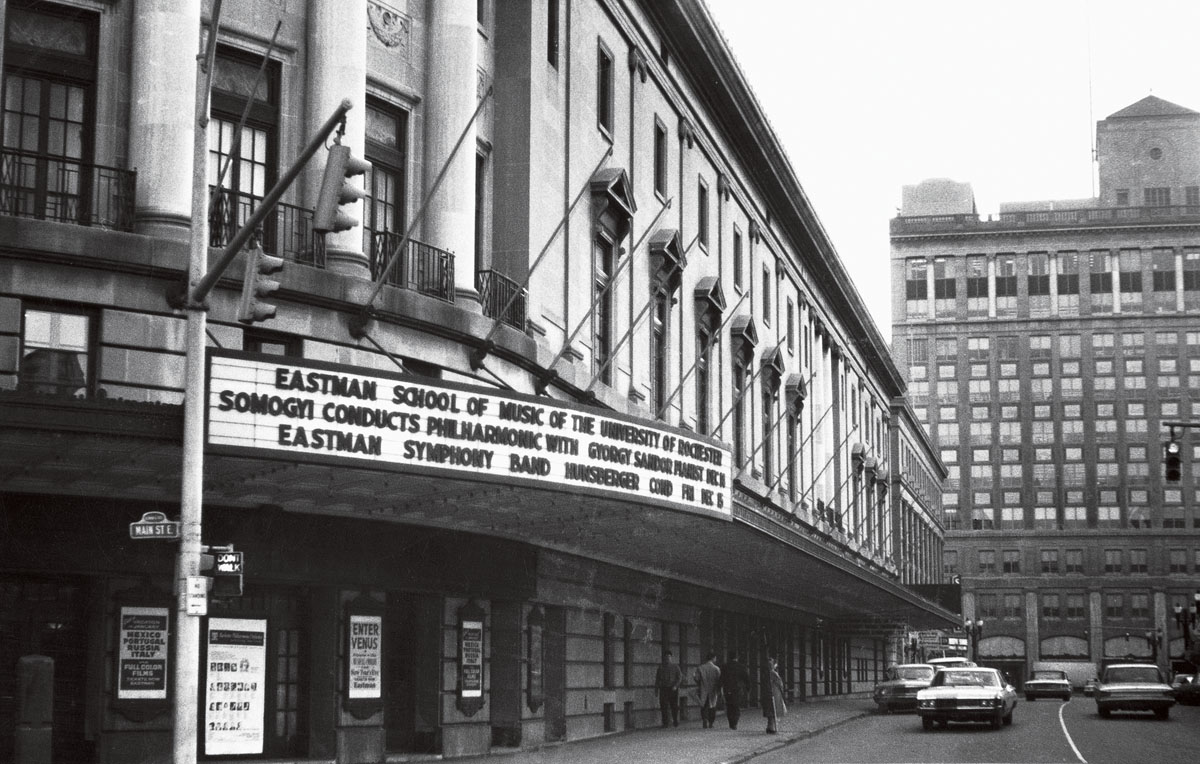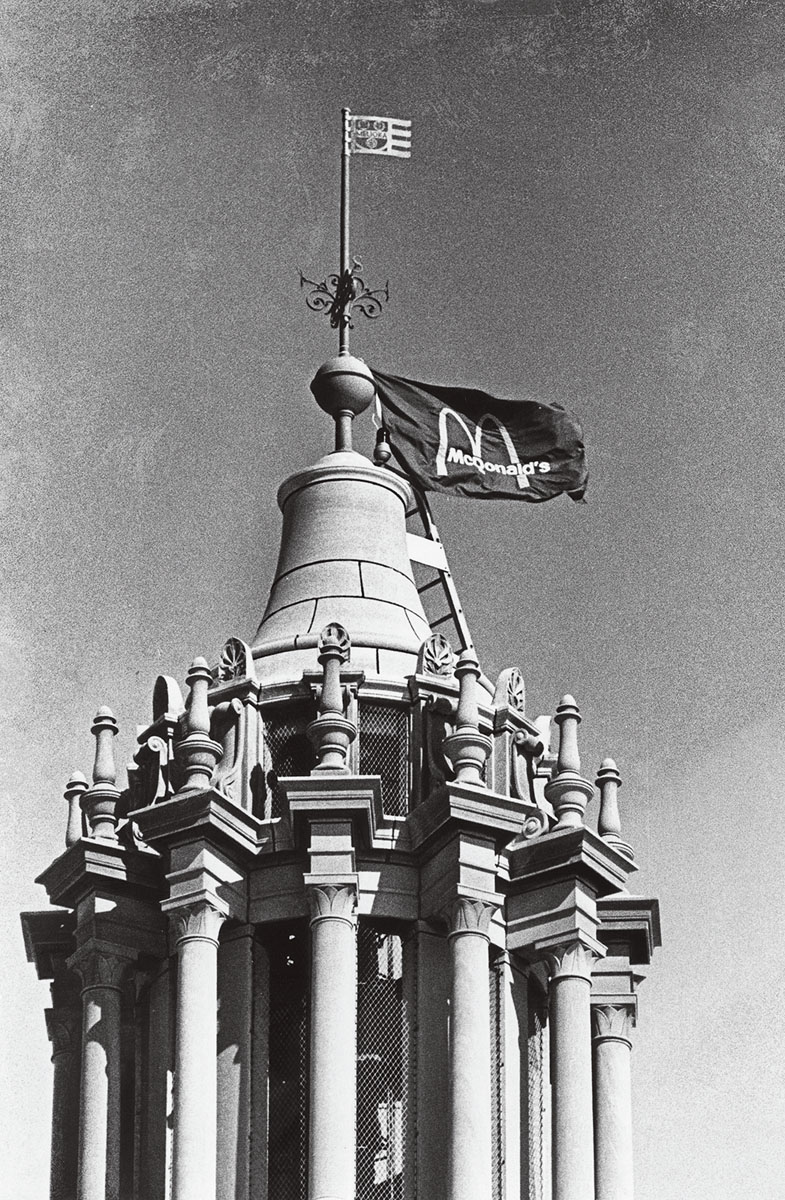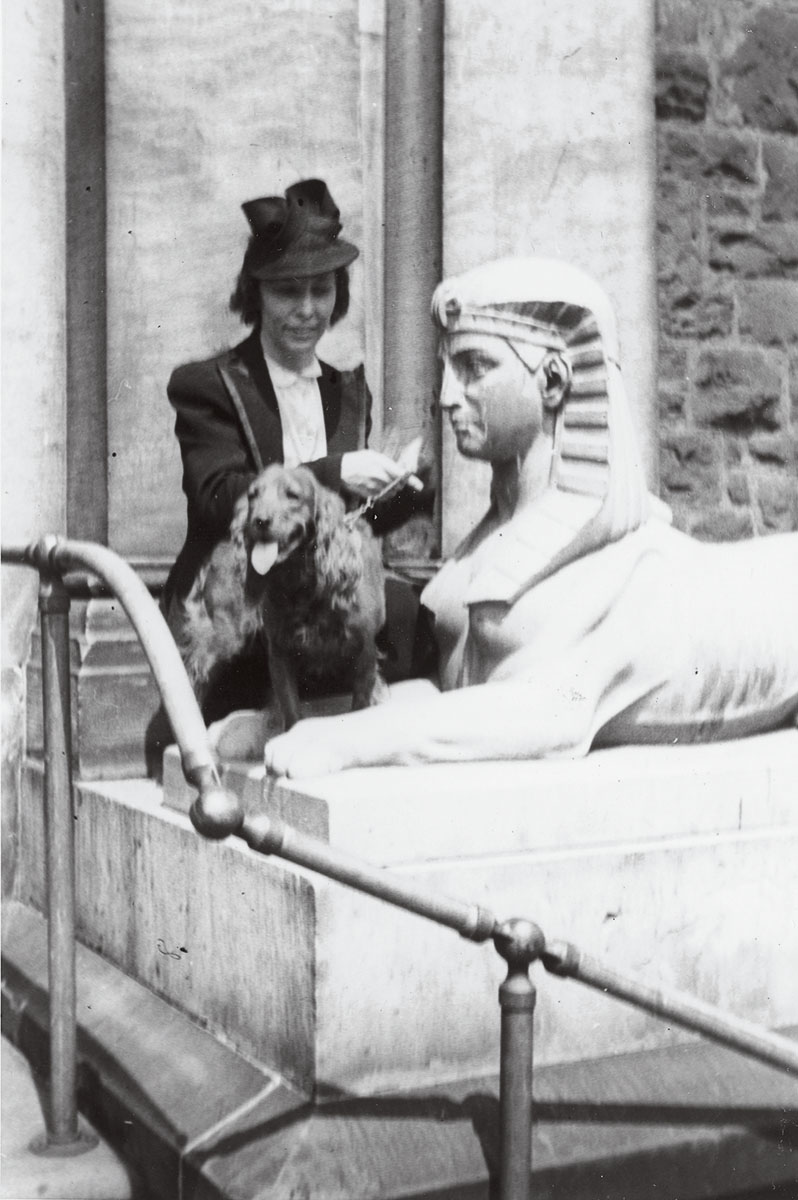In Review
 THE BALLS IN WHOSE COURT? Stagehands cleared the stage for the Rochester Philharmonic Orchestra to play Haydn’s Symphony No. 90. (Photo: University Libraries/Department of Rare Books, Special Collections, and Preservation)
THE BALLS IN WHOSE COURT? Stagehands cleared the stage for the Rochester Philharmonic Orchestra to play Haydn’s Symphony No. 90. (Photo: University Libraries/Department of Rare Books, Special Collections, and Preservation)Need History?
Do you have a question about University history? Email it to rochrev@rochester.edu. Please put “Ask the Archivist” in the subject line.
In 1967 or ’68 my classmate Len Snearowski ’71, ’75 (MA) and I attended a Rochester Philharmonic concert at Eastman Theatre, conducted by the music director, Lazslo Somogyi. We had good seats in the center orchestra section, just before the overhanging mezzanine. A Haydn symphony was, I believe, the first piece on the program.
At some point during the symphony about a thousand ping-pong balls came raining down on the stage, taking about 30 seconds to fall. The balls, of course, bounced crazily all over the stage, the orchestra, the conductor, and some into the audience. All the blue-haired ladies in the audience gasped. Maestro Somogyi stormed off the stage. Len and I, barely holding in our laughter, just looked at each other open-mouthed, assuming, of course (undergraduates as we were), that it was a terrific prank by Eastman students.
After a long interval, during which stagehands gathered up the ping-pong balls, the conductor returned to the podium and said something like, “I believe Mr. Haydn would want us to continue,” receiving a round of applause. The concert resumed, but I never heard or read anything about the incident. So, does anyone reading Review know anything about this? Perhaps even one of the culprits?—Joseph Adler ’70, Gambier, Ohio
The Eastman Theatre and its audiences have been the target of pranks several times. On Valentine’s Day in 1952, it was feathers, dropped to coincide with the cannons of Tchaikovsky’s “1812 Overture,” conducted by Erich Leinsdorf.
There was a close call in the 1980s, recalled by the then Eastman School of Music Dean of Students, Paul Burgett ’68E, ’76E (PhD), in Janice Pieterse’s Our Work Is But Begun: “University Security and I discovered an electric bubble machine abandoned on the stairs leading to the catwalk, presumably by students whose actions, almost certainly, were interrupted by the threat of detection. A concert was scheduled that evening in the theater. I could only imagine the chaos that bubble machine might have wrought.”
 POLE-AXED: Security cameras and alarms now deter would-be flag-pole climbers, where editorials—and common sense—formerly failed, as in this April Fools’ Day incident in 1980. (Photo: University Libraries/Department of Rare Books, Special Collections, and Preservation)
POLE-AXED: Security cameras and alarms now deter would-be flag-pole climbers, where editorials—and common sense—formerly failed, as in this April Fools’ Day incident in 1980. (Photo: University Libraries/Department of Rare Books, Special Collections, and Preservation) THE SPHINX’S RIDDLE: Librarian Marian Allen, Class of 1925, and her dog relax beside an unpranked sphinx outside of Sibley Hall on the Prince Street Campus, circa 1940. (Photo: University Libraries/Department of Rare Books, Special Collections, and Preservation)
THE SPHINX’S RIDDLE: Librarian Marian Allen, Class of 1925, and her dog relax beside an unpranked sphinx outside of Sibley Hall on the Prince Street Campus, circa 1940. (Photo: University Libraries/Department of Rare Books, Special Collections, and Preservation)And 50 years ago, on October 10, 1968, the infamous ping-pong ball incident stopped the season-opening concert of the Rochester Philharmonic Orchestra. The story was reported in the Campus Times (alas, without photographs) and in the Rochester Democrat and Chronicle, with slight variations on the theme of the quantity of missiles.
In his “Critic’s Corner” column in the Campus Times, Larry Fine ’74 wrote: “The RPO opened its 1968–69 concert season . . . amidst a rain of 50 or more ping-pong balls which fell from the ceiling of the stage during the first number.” The D&C’s George Murphy put the number at 100, while a later writer for the same paper marked it down at a mere dozen.
As you note, conductor Laszlo Somogyi resumed the concert, restarting Haydn’s Symphony No. 90, continuing on to Debussy’s “Prélude à l’après-midi d’un faune” and Dvorˇák’s Symphony No. 9 “From the New World” in the second half. The names of the perpetrator(s) are unrecorded in the Archives.
The University has seen its fair share of pranks: in his biography Rhees of Rochester, Professor of English John Rothwell Slater reported that a morning chapel in Anderson Hall was subjected to a hidden alarm clock “set to go off during the prayer . . . It worked all right, but the President (Rush Rhees) went right on praying and never cracked a smile. What he prayed for is not known.”
In 1941, the Stagers theater group produced the George S. Kaufman and Moss Hart comedy You Can’t Take It With You. An editorial in Tower Times, the newspaper of the College for Women, described how a record album was played during a love scene and lamps flickered unexpectedly, and then roundly condemned the malefactors: “Students who will deliberately set at naught weeks of work by their fellows have no place in a college.”
Peer pressure is more successful in inciting mischief than preventing it, however. Time and again, the pages of the student newspapers presented good arguments against bad behavior, but to no avail.
As early as July 1874, an editorial observes, “Fun and jokes are well in their way, but from a young man who has completed a collegiate course, we expect something more.”
“Let us be considerate and let’s have our fun, but when the pranks will necessitate the expenditure of the University’s or others’ money, stop,” came the advice in October 13, 1922, unheeded by generations of students who risked the $100 charge for the removal of paint from the sphinxes in front of Sibley Library (now located on the River Campus).
Many pranks were the result of interclass rivalries. Freshmen would emblazon their class year on a variety of surfaces (like the sphinxes), and literally run it up the Prince Street Campus flag pole on a banner that the sophomores would remove as quickly as possible—if they could. In April 1920, a flag was raised by the Class of 1923, and the rope was stapled to the wooden pole by a climber wearing spiked shoes, resulting in holes “as thick as cheese.” The sophomores cut the other end of the halyard, bringing down both flag and rope. “There is not the slightest objection to hoisting as many 1923’s and 1922’s as possible up the flagpole; but there is objection to having to pay a man, yearly or oftener, to climb the pole and to having the pole subject to decay . . . merely with carelessness.”
The most dangerous pranks for both the prankster and the individual who must undo the “joke” have involved high altitudes: on the River Campus, the top of Rush Rhees Library has been adorned with a Christmas tree and, on April 1, 1980—a date sacred to pranksters everywhere—a McDonald’s flag.
When it comes to pranks, some Rochester students have followed the educational concept of “see one, do one, teach one.” Several pages in the 1890 Interpres yearbook are devoted to a series of “Hallo’een and After” pranks presented in the form of a play, ranging from the perennial painting of the sphinxes to greasing blackboards.
In 1982, an ad appeared in an April 1 issue of Rolling Stone magazine for a Freshman’s Guide to College Pranks, written by 1982 classmates Greg Seminara and Brad Wolfson. The ad itself was initially considered a prank, but 300 copies were ordered and apparently fulfilled. No copy exists in the University Archives.
In 1928, the wooden flagpole was replaced with a steel one, and as the River Campus grew into reality, some of the more destructive traditions were abandoned, perhaps so as not to mar the new campus. And when the time came to abandon the Prince Street Campus buildings in 1955, the Board of Trustees voted to have the sphinxes transferred to their present location between the doors of Morey and Lattimore, facing the Residential Quadrangle, noting “these rather whimsical sculptures are part of the tradition of the old campus and beloved by considerable numbers of students and alumni.”
To read Larry Fine’s review of the RPO, the 1890 Interpres, and more, visit https://rbscp.lib.rochester.edu/blog/ATA-Fall2018.

